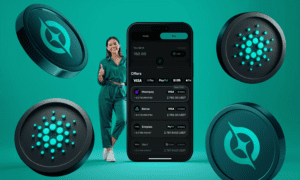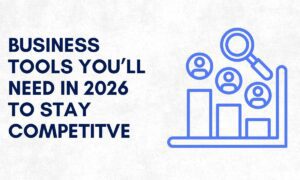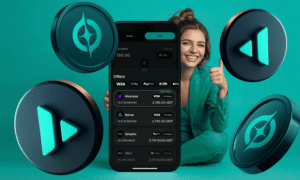B2B tech companies face increasing pressure to grow consistently and stand out in crowded markets. Traditional marketing and sales tactics are no longer sufficient. Growth requires a strategic mix of innovative, scalable, and data-driven channels. Therefore, identifying the best growth channels for B2B tech companies is no longer optional—it’s essential for survival and success.
Why B2B Tech Companies Need Specific Growth Strategies
Unlike B2C businesses, B2B tech companies often deal with longer sales cycles, multiple decision-makers, and complex products. Thus, what works for one business model may not work for another. Growth strategies for these companies must prioritize trust, thought leadership, and high-touch engagement. Moreover, companies must scale without losing authenticity or alienating high-value prospects.
With this in mind, let’s dive into the most effective growth channels B2B tech companies should prioritize.
Search Engine Optimization (SEO): The Long-Term Traffic Engine
First and foremost, SEO is a foundational growth channel that delivers sustainable long-term benefits. By optimizing your website, blog content, and landing pages for search engines, you can attract high-intent traffic at scale.
Key SEO Tactics for B2B Tech:
Keyword research focused on pain points: Rather than targeting broad industry terms, identify specific challenges your audience faces. Use tools like Ahrefs or SEMrush to find long-tail keywords.
- Content clustering: Create pillar content and interlink it with related blog posts. This enhances topical authority and keeps visitors engaged longer.
- Technical SEO: Ensure your site loads quickly, is mobile-friendly, and has clean URL structures. These elements improve user experience and rankings.
- Backlink acquisition: Reach out to industry blogs and publications for guest posts or mentions to improve your domain authority.
Consequently, SEO becomes more than a marketing tactic—it evolves into a lead generation machine that continues to deliver value without requiring constant budget reallocations.
LinkedIn Marketing: Precision Targeting for Decision-Makers
Another critical channel is LinkedIn, which has become the go-to platform for B2B professionals. It offers unmatched targeting capabilities, making it ideal for reaching decision-makers, influencers, and technical buyers.
- LinkedIn Growth Tactics:
- Thought leadership: Encourage your team, especially executives, to post regularly about industry trends, product insights, and customer wins.
- Sponsored content: Run targeted campaigns to promote whitepapers, case studies, or product demos to a specific job title, industry, or company size.
- Direct outreach: Use tools like LinkedIn Sales Navigator to identify and connect with potential leads. Personalize each outreach to increase response rates.
Because of LinkedIn’s professional context, the platform naturally lends itself to B2B engagement. That’s why many tech companies allocate a significant portion of their marketing budget to this platform.
Content Marketing: Educating and Engaging Your Audience
Content marketing remains a powerhouse when done correctly. B2B buyers want education, not aggressive sales tactics. By offering valuable, relevant, and timely content, you build authority and keep your brand top of mind.
Effective Content Types for B2B Tech:
Whitepapers and eBooks: These are ideal for capturing email leads and positioning your company as a thought leader.
- Case studies: Showcase how your product solves real-world problems. This builds credibility and supports the sales team.
- Video tutorials and webinars: Especially useful for explaining complex tech products in a digestible format.
- Blog articles: Focus on search-intent content that answers specific questions or explains difficult concepts.
Additionally, a consistent content calendar helps maintain momentum and aligns marketing efforts across multiple platforms.
Account-Based Marketing (ABM): Personalized and Highly Targeted
For B2B tech companies dealing with high-value clients, ABM is a game-changer. Rather than casting a wide net, ABM focuses on specific companies (or accounts) that are most likely to convert.
ABM Best Practices:
- Segment your audience: Group target accounts based on industry, size, or product fit.
- Personalized campaigns: Tailor landing pages, email sequences, and even ads to speak directly to each account’s needs.
- Sales and marketing alignment: ABM only works when both teams collaborate closely, sharing data and feedback loops.
- As a result, ABM tends to yield higher conversion rates and stronger client relationships—making it a high-ROI channel.
Partnerships and Co-Marketing: Multiply Reach Without Doubling Cost
Strategic alliances with other businesses can significantly expand your reach. Partnering with companies offering complementary solutions allows you to tap into their customer base without direct competition.
Partnership Ideas:
- Joint webinars: Share expertise and leads while doubling promotional reach.
- Co-branded content: Produce a whitepaper or toolkit that provides value to both audiences.
- Channel partnerships: Resellers or consultants who integrate or refer your solution to their clients.
- Although partnerships take time to nurture, they often deliver compounding benefits with minimal spend.
- Paid Media: Fast Results When Used Strategically
Paid ads—whether on Google, LinkedIn, or programmatic platforms—can deliver rapid visibility and lead flow. But they must be used wisely to avoid draining the budget.
Key Paid Media Tips:
- Retargeting: Serve ads to visitors who didn’t convert. These leads are warmer and more likely to engage.
- A/B testing: Test different headlines, CTAs, and visuals to optimize conversions.
- Conversion-focused landing pages: Direct traffic to pages designed to capture leads, not just general information.
When managed carefully, paid media can support other growth channels like content marketing and SEO by amplifying top-performing content.
Email Marketing: Nurturing Leads Through the Funnel
Despite being one of the oldest digital marketing tools, email remains a vital growth channel, especially for nurturing leads and keeping existing customers engaged.
Email Strategy Essentials:
- Segmented lists: Send tailored messages based on user behavior, job role, or company size.
- Drip campaigns: Create automated sequences that guide leads from awareness to conversion.
- Value-driven content: Each email should either educate, solve a problem, or provide an incentive to act.
Because of its low cost and high ROI, email should never be ignored in any B2B growth strategy.
Community Building: Foster Loyalty and Advocacy
Building a community around your brand not only retains customers but also turns them into advocates. Whether through online forums, Slack groups, or in-person meetups, a community fosters deeper engagement.
Community Tactics:
- User groups: Invite power users to share their experiences and feedback.
- AMA (Ask Me Anything) sessions: Let prospects and users interact directly with your product team.
- Exclusive content or previews: Give your community early access to features or beta programs.
- Therefore, community isn’t just a nice-to-have—it becomes a strategic moat that enhances customer lifetime value.
Product-Led Growth (PLG): Let the Product Sell Itself
For SaaS and other scalable tech solutions, PLG is increasingly popular. It flips the traditional sales model by letting users experience the product before buying.
PLG Elements:
- Free trials or freemium models: Lower the entry barrier for new users.
- In-product onboarding: Guide users through features with tooltips and walkthroughs.
- Usage-based triggers: Send messages or offers based on user actions or inactivity.
- PLG works especially well when your product delivers immediate, tangible value. It also reduces acquisition costs over time.
Conclusion
In summary, no single growth channel guarantees success. The most effective B2B tech companies adopt a multi-channel approach, combining long-term strategies like SEO and content marketing with agile tactics like ABM and paid media. Importantly, each channel should feed into a unified customer journey—moving leads from discovery to conversion to advocacy.
By choosing the right mix and continuously optimizing, B2B tech companies can navigate the complexity of modern markets and achieve sustainable, scalable growth.

































